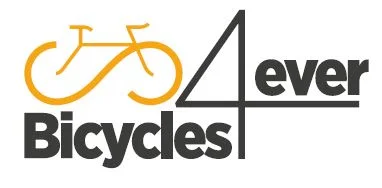Are Pro Handlebars Getting Higher For More Speed? with GCN
Source: GCN Youtube Channel: Are Pro Handlebars Getting Higher For More Speed?
Video Are Pro Handlebars Getting Higher For More Speed? with Global Cycling Network
Video Are Pro Handlebars Getting Higher For More Speed? with Global Cycling Network YouTube Channel.
Are Pro Handlebars Getting Higher For More Speed?
The Global Cycling Network is dedicated to exploring the latest bikes and tech in the cycling world, always on the lookout for new trends and innovations. In a recent investigation, they delved into the topic of rider positioning and aerodynamics, specifically focusing on the use of super low and aggressive riding positions by the world’s best riders. However, a new trend seems to be emerging, with some riders opting for a higher position with more space underneath their stem. This shift raises the question of whether these changes are driven by a desire for comfort or a new understanding of bike position and aerodynamics.
Aerodynamic drag plays a significant role in determining how fast cyclists can ride, as it is the largest factor affecting speed on flat terrain. Traditionally, a lower front end of the bike has been favored for its ability to lower the rider’s torso and back, improving aerodynamics. However, this low position can lead to the rider’s arms being stretched out, which is detrimental to aerodynamics as it presents a large surface area to the wind. The theory proposed is that raising the handlebars and maintaining the rider’s torso position can lead to the bending of elbows, causing the forearm to sit horizontally and present less surface area to the wind. This adjustment could potentially enhance aerodynamics and aid riders in achieving higher speeds with less effort.
To investigate this theory further, the Global Cycling Network examined the setups of various professional cycling teams. The Team Bahrain Victorious riders were observed to have their stems slammed as low as the bike’s geometry would allow, with most riders opting for minimal spaces underneath the stem. While this setup aligns with the traditional low and aggressive position, the investigation found a mix of bike setups across different teams. The Jumbo-Visma, EF Education, Astana-Premier Tech, Alpecin-Fenix, and Ineos Grenadiers teams all showcased varying handlebar positions, indicating that the use of low positions is still prevalent in the professional peloton.
One of the fastest riders in the world, Tadej Pogacar, who was leading the Giro d’Italia at the time of the investigation, was found to have an interesting handlebar setup. Despite using small spaces and narrow handlebars, Pogacar’s bars were positioned high enough to allow for bent elbows and almost parallel forearms to the ground. This unique position, labeled as the arrow hoods position, is favored by many riders in high-speed situations, such as breakaways, as it optimizes aerodynamics and power output. This positioning enables riders to maintain a relatively flat back and reduce drag by presenting less arm surface area to the wind.
Further analysis of rider positions, such as those of Mathieu van der Poel and Wout van Aert, revealed similar trends in utilizing higher handlebars with bent elbows for improved aerodynamics. This shift away from aggressive negative stemmed positions indicates a potential evolution in rider positioning strategies within the professional peloton. The modern approach to time trial positions has also seen a shift towards higher handlebars, closing the gap between the arms and the head to reduce aerodynamic drag. Riders like Remco Evenepoel and time trial specialist Oliver Bridgewood have successfully adopted this technique to enhance their performance.
Despite the emergence of higher handlebar positions and the utilization of additional spacers, the majority of professional riders still adhere to super low and aggressive slammed positions. This observation challenges the theory proposed by the Global Cycling Network, suggesting that there may be additional factors influencing rider positioning preferences. One possible factor could be the evolution of bike geometry over the years, with modern bikes featuring longer and taller head tubes that naturally elevate rider positions without the need for excessive spacers.
As the racing season progresses, the exploration of rider positioning and aerodynamics continues, with the Global Cycling Network committed to uncovering the driving forces behind professional riders’ choices. Through ongoing investigations and analysis, a deeper understanding of the intricacies of bike setup and its impact on performance will be revealed. As cycling enthusiasts and professionals alike, staying informed and engaged with the latest trends and developments in the cycling world is crucial for continual improvement and success on the road. Join the conversation by sharing your thoughts on rider positions and bike setups in the comments section, and support the Global Cycling Network by subscribing to GCN and GCN Tech for more insightful content. Stay tuned for future updates and insights into the dynamic world of cycling!
The opinions expressed in this space are the sole responsibility of the YouTube Channel Global Cycling Network and do not necessarily represent the views of Bicycles4ever Cycling Culture.

